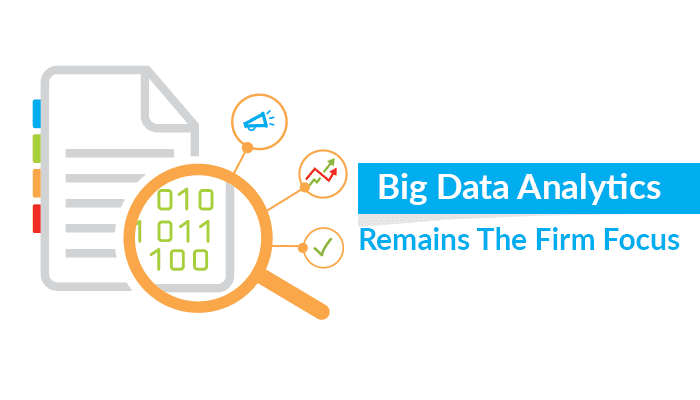How we talk about data has changed to include terms such as “fog analytics,” “edge analytics,” and the “four Vs.” As data collection and data storage become more automated, the daily tasks we undertake to run our businesses more efficiently have become more automated as well. Data can help small businesses predict which markets to tap into next, or which email format works best for different products.
But how should we discern the difference between daily tasks that can be automated and ones that require more personalization or attention to detail? Furthermore, what does this all mean for small businesses, and how can business owners utilize some of these concepts to help themselves succeed?
Daily Automated Tasks
What are some tasks you do on a daily basis that are integral to the smooth operation and social reach of your company? Chances are, a number of projects and financial records can be automated or more centrally organized, rather than done manually or confined to one space. Altering some of these processes might come down to a willingness to let go and delegate tasks. And some of it may have to do with turning a daily process into more of a routine than fully holistic and singular, every time. For example, take project management, accounting processes, and website analytics.
Rather than having one person hoard all the knowledge about a particular project, it’s preferable to centralize various tasks and projects into one place. Furthermore, “According to a SCORE survey,” writes Intuit, “40% of small business owners reported bookkeeping and taxes as the worst part of owning a business.” Since bookkeeping can cost quite a bit to outsource, it’s best if small business owners look for ways to minimize costs related to finance and accounting, thereby freeing up a lot of time for other, more nuanced components of managing their business.
And if you’ve wondered how you might utilize Google Analytics to track and report website traffic, you’re not alone. Now Google’s making it possible to access a demonstration account—a dummy account, of sorts. Through accessing this sample data, new users will more easily understand which types of data are collected, as well as the kind of insight they’ll be able to glean from setting up an account to analyze their own business website’s traffic and usage patterns. It’s also possible to utilize
Fog and Edge Analytics
You may or may not have heard of the terms “fog computing” or “edge analytics,” but they basically refer to performing analysis on IoT data in real time. Talend writes, “It’s about [analyzing] in real-time on site. The architectural design of ‘things’ should consider built-in analysis.” For example, Forbes’ Bernard Marr describes what the ideal method of data collection from a massive-scale security system might look like, assuming hundreds of hours of footage is collected: “Wouldn’t it be better if the images themselves could be analyzed within the cameras at the moment it is captured, and anything found to be useless either discarded or marked as low priority, freeing up centralized resources to work on data of actual value?”
You might deduce that more sophisticated discernment within data analytics programs would likely require more sophisticated programming. This is certainly true, and it only points to the increasingly pressing need for more professionals well-versed in data analytics, IoT, and cybersecurity. But more importantly for small businesses, capable individuals are needed to decide which types of data are deemed important, after the fact, and which parts are expendable; because eventually we’re going to run out of space. As more of our devices become connected online, we will need to find ways to make room for all of them, and only the ones that are the most clever and efficient in their data collection methods will be let through the door.
Data Governance and the Four Vs
Because of the rate of data collection, we are faced with the need for data governance and a system of understanding how to organize all the data our small businesses accumulate. According to Maryville University, “… As the year continues, we will see increased value and insight from artificial intelligence (AI) and machine learning algorithms, which are now powerful enough to handle the Four Vs of Big Data: volume, velocity, variety, and veracity.” Beyond knowing which aspects of data we should be concerned with, it’s crucial to decide how it will be automated, as well as who will be responsible for it. Hence the need for governance.
Moreover, we are in need of efficient data organization, as well as attention paid to the quality and privacy of collected data. While data volume and velocity can be largely automated, the last two—variety and veracity—require a more discerning entity to fully comprehend. It’s best to select particular data sets upon which to focus and utilize to greater ends. In particular, we can learn a great deal from the particular types of data we choose to focus on, some of which aren’t intuitively connected: structured and unstructured data, text information, payment information, GPS data, audio, and video.
Thankfully, we now have tools like IBM Watson Analytics to allow laypeople to become virtual data scientists. Analysts pull relevant data sets, visualize and analyze data using advanced analytical tools, and make real-time decisions. However, Martin Zwilling warns that he sees many executives who still view data analytics as a measurement of current and past results, rather than a tool to determine future strategy. Therefore, it’s important to keep an open mind and remain open to taking risks and innovating. Otherwise, you may fall into a routine that goes unquestioned.
The business world is evolving, and it demands that we stay abreast of current technology in order to remain competitive, regardless of our company size or type. What are you doing to utilize automation and big data for your business?


